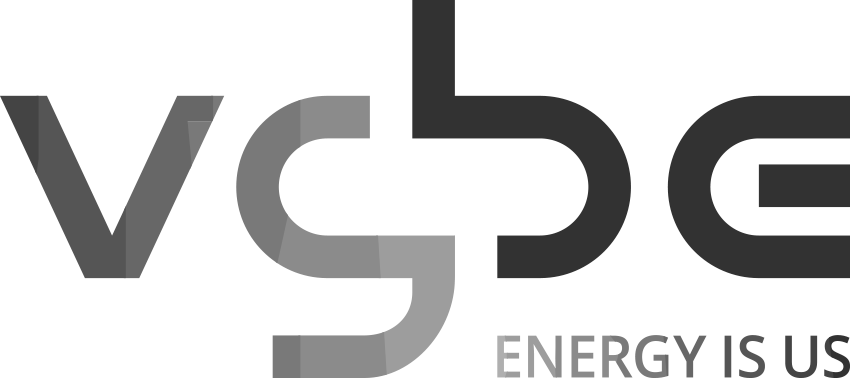Suchergebnisse für 'Goedkoop zyban online 🌚⡅ www.7rx.biz/zyban 🌚⡅ zyban costo. goedkope zyban Fed Ex goedkope, generieke zyban tabletten Kopen zyban'
Maximallänge der Suchanfrage ist 128. Ihre Suchanfrage wurde gekürzt.
Maximale Wortanzahl ist 10. Ihre Suchanfrage wurde auf generieke tabletten Kopen gekürzt.
-
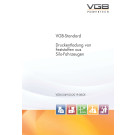
Druckentladung von Feststoffen aus Silo-Fahrzeugen - Print
Bestell-Kennz.: VGB-S-049-00-2019-08-DEDieser VGB-Standard dient dazu, die möglichen Gefahren beim Entladen aufzuzeigen und entsprechende Schutzmaßnahmen zu beschreiben.
-
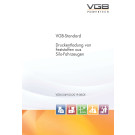
Druckentladung von Feststoffen aus Silo-Fahrzeugen - ebook
Bestell-Kennz.: VGB-S-049-00-2019-08-DE-ebookDieser VGB-Standard dient dazu, die möglichen Gefahren beim Entladen aufzuzeigen und entsprechende Schutzmaßnahmen zu beschreiben.
-
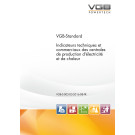
Indicateurs techniques et commerciaux des centrales de production d’électricité et de chaleur - 8ère édition 2016, gratuit - ebook
Bestell-Kennz.: VGB-S-002-03-2016-08-FR-ebookzzgl. Steuern: 0,00 € Inkl. Steuern: 0,00 €Ce standard VGB permet à l'utilisateur de réaliser une évaluation technique et économique des centrales. De plus, l’influence des prix de marché et des exigences légales sur le fonctionnement des centrales électriques peuvent être analysés à l’aide de ce standard VGB. En détail, l'utilisateur a à sa disposition des options d'analyse pour l'évaluation des processus d’une centrale, de son fonctionnement et la détermination de son positionnement économique.
-
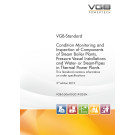
Condition Monitoring and Inspection of Components of Steam Boiler Plants, Pressure Vessel Installations and Water- or Steam-Pipes in Thermal Power Plants - 3rd edition 2019 - ebook
Bestell-Kennz.: VGB-S-506-00-2019-02-EN-ebookThis VGB Standard describes possibilities and methods for condition monitoring and performance of tests and inspections in due consideration of hazards especially arising from steam and pressure in components of steam boiler plants, pressure vessel installations and water- or steam pipework.
-
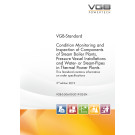
Condition Monitoring and Inspection of Components of Steam Boiler Plants, Pressure Vessel Installations and Water- or Steam-Pipes in Thermal Power Plants - 3rd edition 2019 - Print
Bestell-Kennz.: VGB-S-506-00-2019-02-ENThis VGB Standard describes possibilities and methods for condition monitoring and performance of tests and inspections in due consideration of hazards especially arising from steam and pressure in components of steam boiler plants, pressure vessel installations and water- or steam pipework.
-
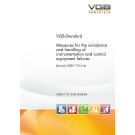
Measures for the avoidance and handling of instrumentation and control equipment failures - ebook
Bestell-Kennz.: VGB-S-170-12-2018-08-EN-ebookThe former VGB Guideline VGB-R 170 A1e “Measures for the avoidance and handling of instrumentation and control equipment failures” was used since 2005 for the support during the specification and assessment of control and instrumentation systems with regard to their robustness against failures at increasing use of standard IT components and IT networks.
-
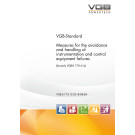
Measures for the avoidance and handling of instrumentation and control equipment failures - Print
Bestell-Kennz.: VGB-S-170-12-2018-08-ENThe former VGB Guideline VGB-R 170 A1e “Measures for the avoidance and handling of instrumentation and control equipment failures” was used since 2005 for the support during the specification and assessment of control and instrumentation systems with regard to their robustness against failures at increasing use of standard IT components and IT networks.
-

Fire Protection in Onshore Wind Turbines - ebook
Bestell-Kennz.: VGB-S-017-00-2018-09-EN-ebookFire-fighting operations by fire brigades in onshore wind turbines are almost impossible because of their height and resulting difficulty of accessing them. For this reason, fire prevention, early detection and early fighting of a fire, and the self-rescue of persons present in the installations during a fire are key considerations
-

Fire Protection in Onshore Wind Turbines - Print
Bestell-Kennz.: VGB-S-017-00-2018-09-ENFire-fighting operations by fire brigades in onshore wind turbines are almost impossible because of their height and resulting difficulty of accessing them. For this reason, fire prevention, early detection and early fighting of a fire, and the self-rescue of persons present in the installations during a fire are key considerations.
-
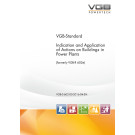
Indication and Application of Actions on Buildings in Power Plants - ebook
Bestell-Kennz.: VGB-S-602-00-2016-04-EN-ebookThe aim of this VGB standard is to provide a consistent procedure for the definition, classification and processing of actions on load-bearing structures for the construc-tion of power plants. It is also intended to cover significant influences of operation-induced fluctuating states like the filling levels of tanks and the frequency and pro-cesses of filling and emptying operations.
-
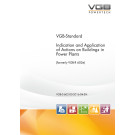
Indication and Application of Actions on Buildings in Power Plants - Print
Bestell-Kennz.: VGB-S-602-00-2016-04-ENThe aim of this VGB standard is to provide a consistent procedure for the definition, classification and processing of actions on load-bearing structures for the construc-tion of power plants. It is also intended to cover significant influences of operation-induced fluctuating states like the filling levels of tanks and the frequency and pro-cesses of filling and emptying operations.
-
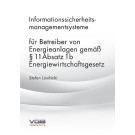
Informationssicherheitsmanagementsysteme für Betreiber von Energieanlagen gemäß § 11 Absatz 1b Energiewirtschaftsgesetz (Stefan Loubichi) - Print
Bestell-Kennz.: B31zzgl. Steuern: 91,59 € Inkl. Steuern: 98,00 €Durch das IT-Sicherheitsgesetz in Verbindung mit dem BSI-Gesetz, der KRITIS-Verordnung (Verordnung zur Bestimmung Kritischer Infrastrukturen nach dem BSI-Gesetz (BSI-Kritisverordnung – BSI-KritisV)) und dem IT-Sicherheitskatalog nach § 11 Absatz 1b EnWG (Energiewirtschaftsgesetz) müssen Betreiber Kritischer Infrastrukturen in einem komplexen Verfahren im Rahmen einer knapp bemessenen Zeitspanne nachweisen, dass sie Informationssicherheitsmanagementsysteme nicht nur implementiert sondern auch zertifiziert haben. Hinzu kommt, dass die von unabhängigen Dritten durchgeführten Prüfungen jährlich wiederholt werden.
-
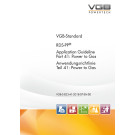
RDS-PP® Anwendungsrichtlinie Teil 41: Power to Gas - Application Guideline Part 41: Power to Gas - ebook
Bestell-Kennz.: VGB-S-823-41-2018-07-EN-DE-ebookDiese RDS-PP®-Anwendungsrichtlinie für Power to Gas Anlagen wurde von einer Projektgruppe der VGB-Fachgruppe „Anlagenkennzeichnung und Dokumentation“ in enger Zusammenarbeit mit Herstellern und Betreibern erarbeitet.
This RDS-PP® Application Guideline for Power to Gas plants was prepared by a project group of the VGB Technical Group “Reference Designation and Plant Documentation”, in close cooperation with experts from manufacturers and operators.
-
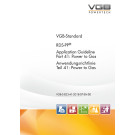
RDS-PP® Anwendungsrichtlinie Teil 41: Power to Gas - Application Guideline Part 41: Power to Gas - Print
Bestell-Kennz.: VGB-S-823-41-2018-07-EN-DEDiese RDS-PP®-Anwendungsrichtlinie für Power to Gas Anlagen wurde von einer Projektgruppe der VGB-Fachgruppe „Anlagenkennzeichnung und Dokumentation“ in enger Zusammenarbeit mit Herstellern und Betreibern erarbeitet.
This RDS-PP® Application Guideline for Power to Gas plants was prepared by a project group of the VGB Technical Group “Reference Designation and Plant Documentation”, in close cooperation with experts from manufacturers and operators.
-
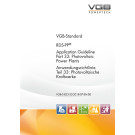
RDS-PP® Anwendungsrichtlinie Teil 33: Photovoltaische Kraftwerke; Application Guideline Part 33: Photovoltaic Power Plants - ebook
Bestell-Kennz.: VGB-S-823-33-2018-07-EN-DE-ebookDiese RDS-PP®-Anwendungsrichtlinie für Photovoltaische Kraftwerke wurde von einer Projektgruppe der VGB-Fachgruppe „Anlagenkennzeichnung und Dokumentation“ in enger Zusammenarbeit mit Herstellern und Betreibern erarbeitet.
This RDS-PP® Application Guideline for photovoltaic power plants was prepared by a project group of the VGB Technical Group “Reference Designation and Plant Documentation”, in close cooperation with experts from manufacturers and operators.
-
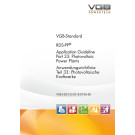
RDS-PP® Anwendungsrichtlinie Teil 33: Photovoltaische Kraftwerke; Application Guideline Part 33: Photovoltaic Power Plants - Print
Bestell-Kennz.: VGB-S-823-33-2018-07-EN-DEDiese RDS-PP®-Anwendungsrichtlinie für Photovoltaische Kraftwerke wurde von einer Projektgruppe der VGB-Fachgruppe „Anlagenkennzeichnung und Dokumentation“ in enger Zusammenarbeit mit Herstellern und Betreibern erarbeitet.
This RDS-PP® Application Guideline for photovoltaic power plants was prepared by a project group of the VGB Technical Group “Reference Designation and Plant Documentation”, in close cooperation with experts from manufacturers and operators.
-
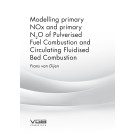
Modelling primary NOx and primary N2O of Pulverised, Fuel Combustion and Circulating Fluidised Bed Combustion (Frans van Dijen) - Print
Bestell-Kennz.: B15zzgl. Steuern: 91,59 € Inkl. Steuern: 98,00 €ABSTRACT
With more stringent emission limits with time, including NOx and N2O, and due to the high costs of secondary measures for NOx emissions reduction, knowledge of primary NOx and primary N2O is very important. With this knowledge, primary NOx and primary N2O can be reduced at low costs and in this way costs for secondary measures are much reduced as well. By applying the knowledge presented, the project costs of a CFBC plant can be lower than those of a PFC plant.
Knowledge regarding primary NOx and primary N2O, and their models, is useful for operators of PFC and CFBC regarding the influence of (the change of):
- Fuel, with PFC and CFBC
- Lambda, with PFC and CFBC
- Temperature, with CFBC
- Addition of limestone to the bed, with CFBC.
Knowledge regarding primary NOx and primary N2O, and their models, is useful for suppliers of boilers, burners, etcetera, regarding the influence of (the change of):
- Design, with PFC and CFBC
- Fuels and fuel flexibility, with PFC and CFBC
- Conversion of the boiler for other fuels, with PFC and CFBC
- Developing assisting systems / software, with PFC and CFBC
- Temperature, with CFBC
- Addition of limestone to the bed, with CFBC.
With this thesis, the mathematical models of primary NOx of CFBC, primary NOx of PFC and primary N2O of CFBC were improved. The models are based on chemical aspects, such as thermodynamics, kinetics and reaction mechanisms.
-
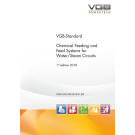
Chemical Feeding and Feed Systems for Water/Steam Circuits - ebook
Bestell-Kennz.: VGB-S-042-00-2018-01-EN-ebookThe aim of the VGB-Standard VGB-S-042-0-2018-01-EN is to specify and explain methods and systems for the chemical treatment of make-up water, boiler feed water, steam and condensate for the operation of water/steam cycles.
-
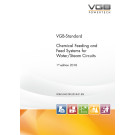
Chemical Feeding and Feed Systems for Water/Steam Circuits - Print
Bestell-Kennz.: VGB-S-042-00-2018-01-ENThe aim of the VGB-Standard VGB-S-042-0-2018-01-EN is to specify and explain methods and systems for the chemical treatment of make-up water, boiler feed water, steam and condensate for the operation of water/steam cycles.
-
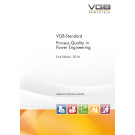
Process Quality in Power Engineering - ebook
Bestell-Kennz.: VGB-S-012-00-2016-02-EN-ebookIn the construction of new power plants and during the overhaul of process control systems in existing plants, the implementation of special tools for process optimization is increasingly becoming part of the instrumentation and control (I&C) contractor’s scope of supply. Although these modules have different designations, depending on the manufacturer or supplier, they often draw upon similar approaches, data models and processing algorithms.
